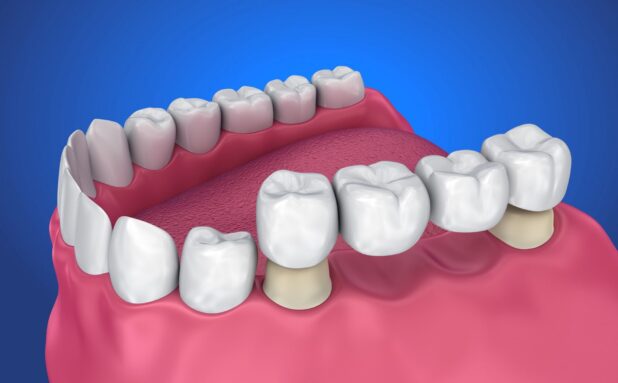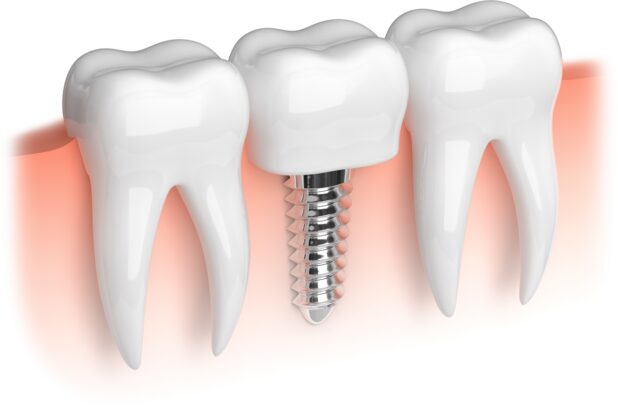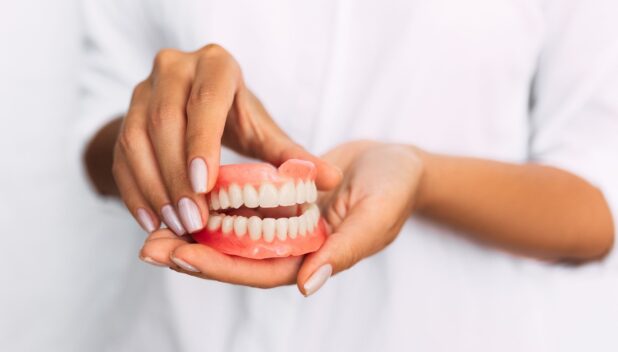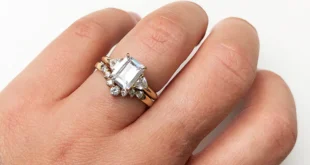According to the Centers for Disease Control and Prevention, 26% of adults aged 65 or older have eight or fewer teeth and about 17% have lost all their teeth. Missing teeth can make one self-conscious. It affects self-esteem and makes you smile less. It can also affect your ability to eat and chew food well. Fortunately, there are several options for tooth replacement, which we have listed below.
Table of Contents
Fixed bridges

A bridge is a device that connects prosthetic teeth to adjacent natural teeth, and is a fixed solution that stays in the mouth and is not removable. This procedure involves cutting down or shaving teeth on either side of the missing teeth so that the bridge can be attached to them.
There are three types of fixed bridges: traditional, cantilever, and Maryland.
A traditional bridge is the most common and is usually made of ceramic or porcelain. The natural teeth (or abutment teeth) on either side of the replacement teeth (or pontic teeth) get crowns to anchor the prosthetics in place. This type of bridge can be used when there are healthy teeth on both sides of the missing teeth. They will need to be strong enough to support the bridge even if shaved.
A cantilever bridge is similar to the traditional bridge but connects to only one abutment tooth on one side. There are at least three situations when a cantilever bridge is used:
- When one of the adjoining teeth to the gap is a front tooth
- When the missing tooth is the last back tooth
- If adjoining teeth already have another type of tooth restoration work and may not be strong enough to support a traditional bridge
A Maryland bridge, also called a resin-bonded bridge, is often the alternative of choice for missing front teeth since front teeth are not subjected to as much pressure as teeth needed for chewing. The replacement teeth are fused to metal bands attached to the back of the natural teeth. This is a more conservative approach to the traditional bridge. Adjacent teeth are not shaved down and there are no crown placements. Instead, metal wings attach to the back of the natural teeth.
Bridges come with some disadvantages. For one, the procedure often will cut down or shave perfectly healthy teeth on both sides of the missing teeth. Bridges in the lower jaw also do not last as long as those in the upper jaw since the jaw flexes. Over time, the fixed bridge could leak on one side, allowing bacteria to enter.
Dental implants

According to mcomberdental.com, a dental implant involves a surgical procedure where a titanium post is screwed into the jawbone. This serves as an anchor for the false tooth that will be eventually placed on top. Once the area of the implant has healed and fused to the jawbone, a dental crown is placed on top.
Dental implants look and feel very natural when chewing, smiling, and brushing; they also do not involve any adjacent teeth. You cannot tell the difference between an implant and a natural tooth. Implants last for years, even decades. There is almost no maintenance except the usual professional checkups and cleaning.
A dental implant is probably the most costly of all the tooth replacement options due to the surgery. It will also require a considerable amount of time for healing to occur. This option is best when replacing a single tooth.
Dental implants have two distinct advantages. While expensive, they may actually be cost-effective in the long run as they do not need changing as often as a bridge would. An implant preserves the jawbone and gum tissue and does not require the grinding down of healthy teeth.
For several missing teeth in a row, an implant-supported bridge can be used. Not all missing teeth are replaced with single implants. Instead, only the teeth at both ends are secured with implants. The teeth in the middle are not screwed in. Sometimes the dentist will screw the bridge onto the implants. It is easier to remove the bridge when it needs repairing or cleaning. The screw holes are not visible as these are covered up with composite resin that is the same color as the teeth.
The benefits are similar to the single dental implants but an implant-supported bridge is less expensive.
Removable dentures

The most affordable option is removable dentures. These are replacement teeth attached to a metal frame covered by an acrylic, gum-colored base. There are two kinds of removable dentures: partial dentures, which only replace a few missing teeth, or complete dentures for people who have lost most or all of their teeth.
Removable dentures are non-invasive and are easy to put on and remove. Some of these have metal clasps that hook onto natural teeth on both sides of the mouth. Others are made from a flexible nylon material with clasps made from gum-colored nylon so they are not visible.
Removable dentures do have their disadvantages. They need to be removed and cleaned regularly. Most of these dentures have to be removed before sleeping so the gums can rest. More care is needed when handling these dentures though because they can break. They could become ill-fitting after some time since the jawbone changes shape. Some kinds of food are difficult to eat or not advisable as they could damage the dentures, like hard or sticky food.
They could affect your ability to properly taste food. Some dentures move as you speak and eat and sometimes make a clicking sound. The pressure of the denture on the gums and jawbone can also accelerate jawbone loss.
Removable dentures also need to be removed and cleaned regularly. Most of these dentures have to be removed before sleeping so the gums can rest. More care is needed when handling these dentures though because they can break.
The best way to avoid tooth loss is to take care of them while still young and consult a dentist promptly whenever cavities appear. However, if you have already lost teeth, you have all these options to choose from. Weigh the pros and cons with your dentist and see which option fits your budget.
Read Also:
Reasons to Have Regular Dental Visits and Checkups
 World Magazine 2024
World Magazine 2024






